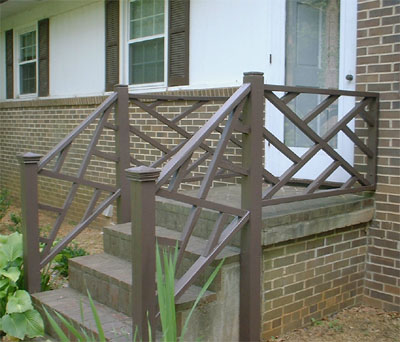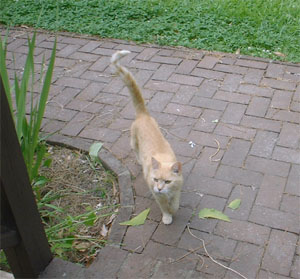Every summer, for the last five or six years, my son has attended a city-run camp for high-functioning autistic children. This year he moved up into the “teen” category, but although the kids are separated by age they’re in the same park, and see the same camp counsellors year after year.
My son is definitely “high-functioning;” many people don’t realize he’s autistic unless I tell them. Sometimes they might simply think he’s a little odd. The most noticable traits he has is that he has trouble picking up on the subtler social cues, and he tends to rock and flap his hands when he’s tired or excited. There are others, but nothing you’d really notice on casual acquaintance. We haven’t had him formally diagnosed since the initial assessment that determined his autism, but we’re fairly sure that he falls within the Asperger’s spectrum.
He is a very intelligent young man. I have often thought his intelligence is the reason he has been so successful in learning how to interact with other people. He studies facial expression, gesture, tone of voice, trying to determine the unspoken messages they convey, and then he will ask for clarification: “Are you sad?” His memory is phenomenal, and I suspect photographic—his favorite thing is to do a walk-through of someone’s house, and then draw the layout of the rooms. The drawing is always accurate, both in the layout of the rooms and the proportions of their size and location. He draws from top to bottom as if tracing a picture, because that’s exactly what he’s doing—he’s tracing the picture in his head. Only in the last few years has he come to understand how remarkable his memory is.
For much of his elementary school career he was in classrooms that were separate from the average school curriculum, along with other special-needs children. In the last few years, though, he has reached the point where he could be mainstreamed into the general classes. This has been a difficult adjustment for him. In the isolated special-needs environment, he was a star pupil, usually the most verbal and self-sufficient child in the room. In the non-specialized classroom he has to struggle to keep up. There are distractions and background noise that make it difficult for him to focus. The material being covered is more difficult. The teachers are less willing to let him go off and do his own thing when he gets tired of paying attention. And, of course, he gets teased by some of the other kids, because he is different.
I think it’s been good for him, nonetheless. His social skills have improved a lot. He is now doing work that is only slightly below the grade level of other kids his age, where in special-needs classes he was often following a curriculum several years behind. His teachers have gone out of their way to find strategies to accomodate his particular needs and help him learn the material. He has made friends with some of his classmates. At the end of the school year the students are given end-of-grade tests to determine how well they learned the curriculum for their grade level; my son scored three out of a possible four. Next year he starts high school, and while it’s going to be hard work for him, I think he can succeed.
But if it’s good for him to be mainstreamed, to be held up to the expectations that apply to the majority of his peers, it’s also good for him to sometimes have a chance to just have fun. This is where the summer camps come in. He could probably get along fine in any summer camp, but going to one for autistic youth means that he’s surrounded by people who don’t care if he flaps, or if he makes funny noises, or if he wants to go sit alone in a corner for a little while and regroup. He can relax and be himself, and that’s the whole point of summer vacation.
In other news, the porch railing is now painted.

My younger son helped for a while (the older, as mentioned above, is in camp today). When I first opened the can of combination paint/primer, I saw the paint was a drab brown, almost gray—nothing like the rich brown depicted on the label. I remarked on this to my son, adding, “Well, we’ve got some darker brown left over downstairs, we’ll just use this as primer and then use that as the second coat.”
As it started to dry it turned into the darker brown you see here. I said, “Oh, it’s changing color as it dries, we won’t need the other paint after all.”
My son replied, “Yes, it says it does that on the can.”
This is why I take him with me when I go shopping. He notices everything. He’s the one who found the paint that was also primer, so we didn’t have to buy both.
Oh yes, and this is the other contributor to our paint job.

Her name is Casey. Technically she lives across the street. You couldn’t tell if you didn’t live in the neighborhood, because she spends as much time at the adjacent houses as she does her own. When she saw us painting she came across the street for some petting. You may notice some dark brown streaks on her tail; we tried to keep her away from the wet paint but were not entirely successful. Our railing has some decorative tufts of orange fur, too.
Sorry, the comment form is closed at this time.